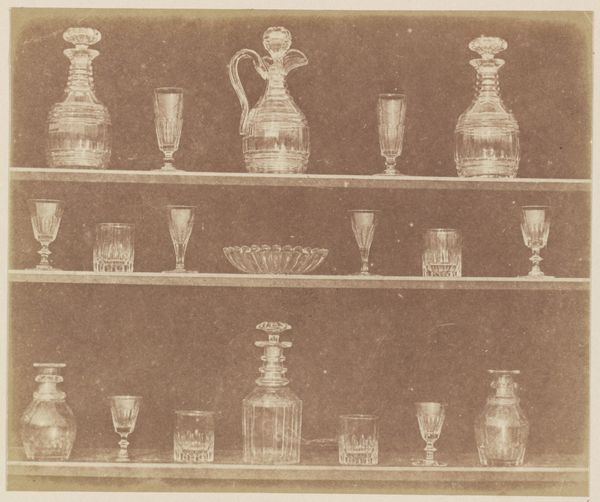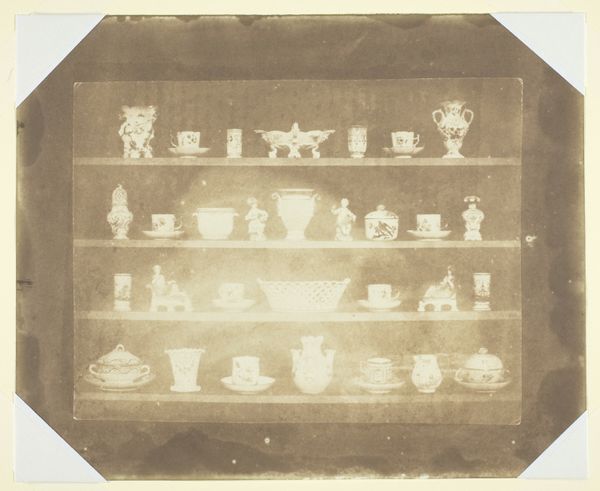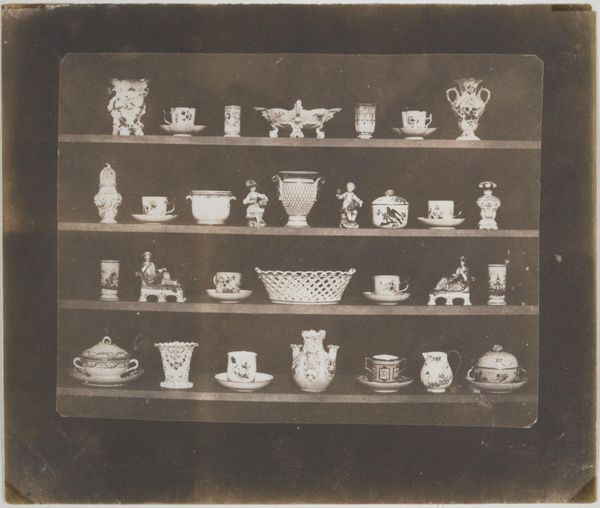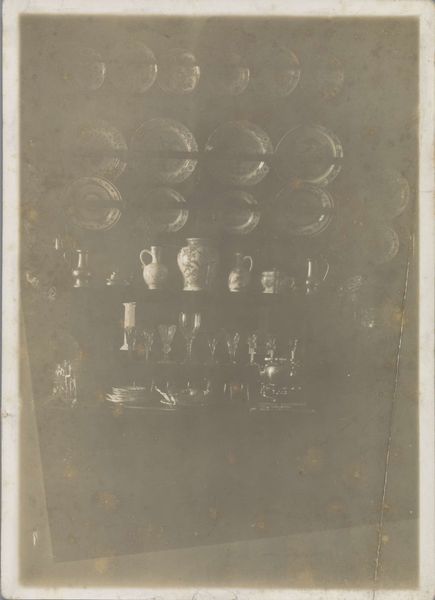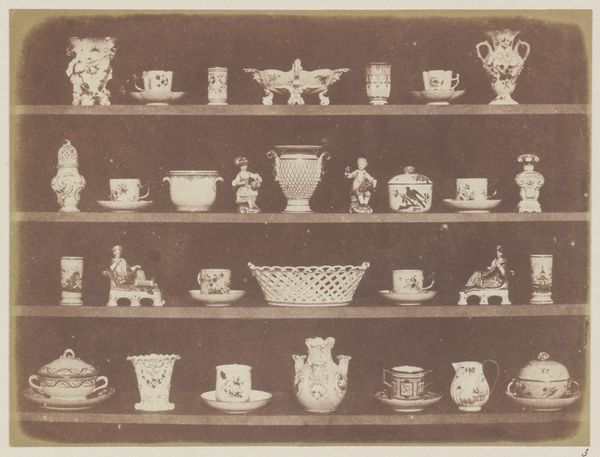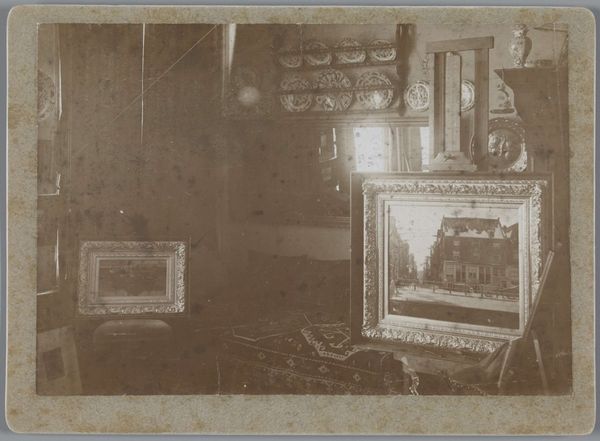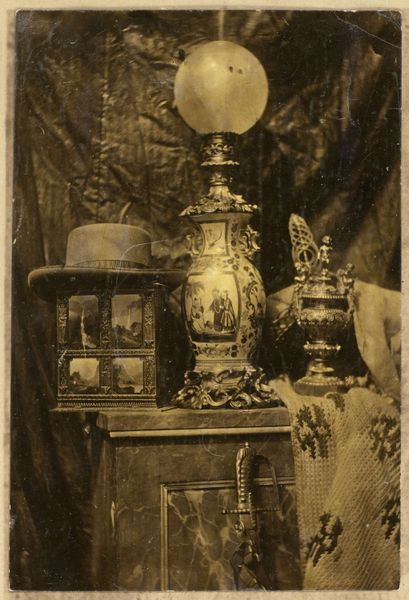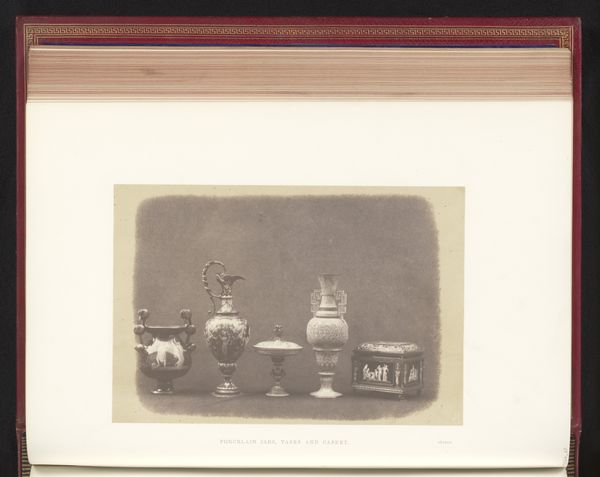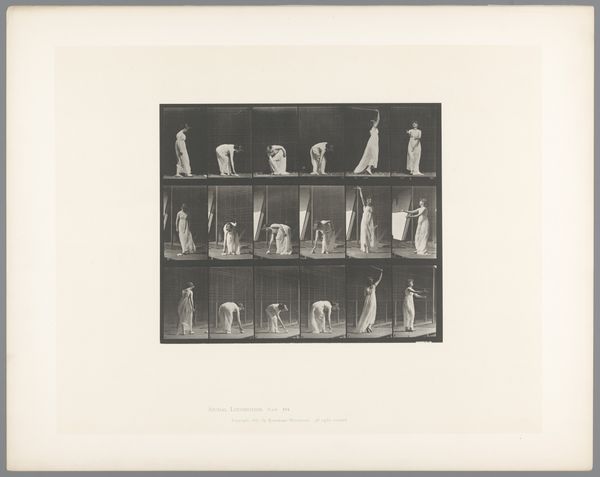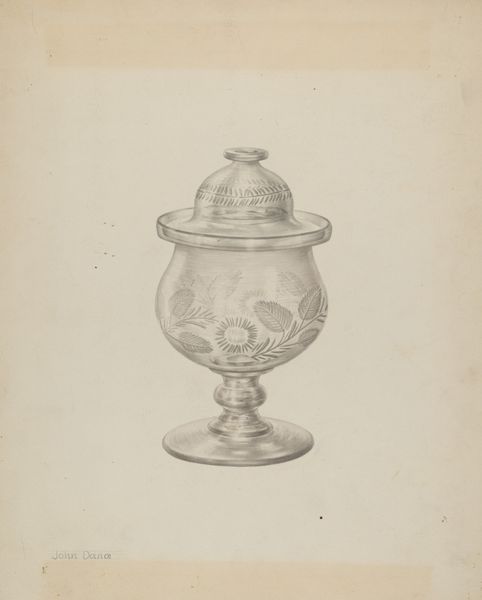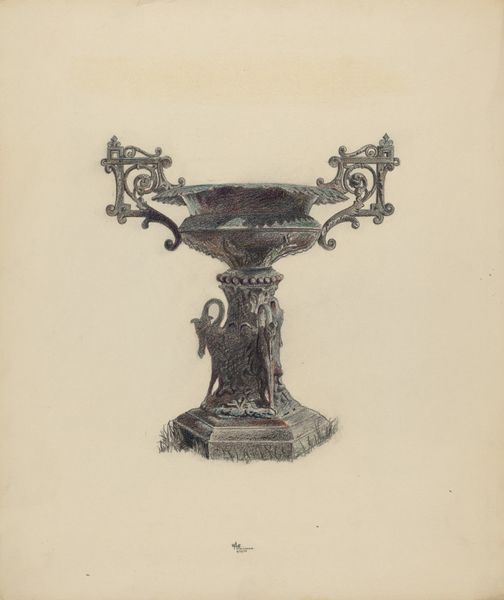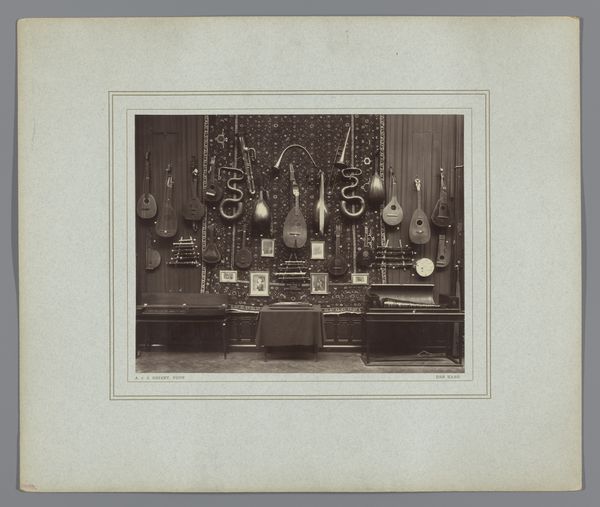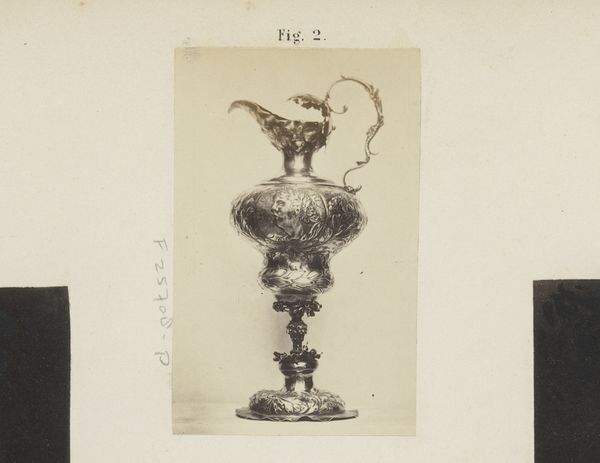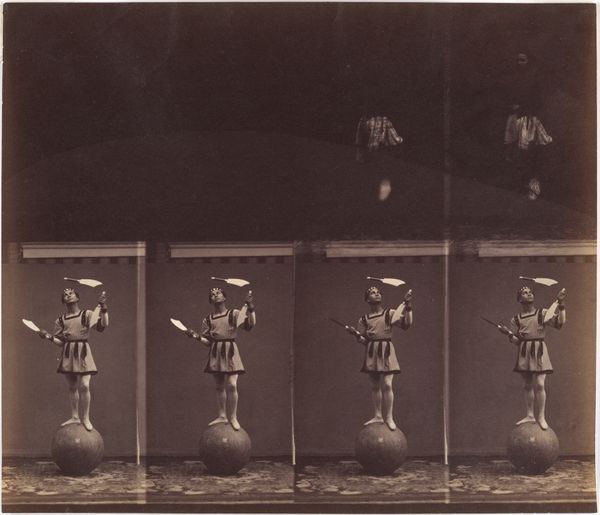
print, photography, gelatin-silver-print
# print
#
photography
#
romanticism
#
gelatin-silver-print
Dimensions: 12.7 × 15.2 cm (image); 18.7 × 23.2 cm (paper)
Copyright: Public Domain
Curator: Welcome! Here we have a work by William Henry Fox Talbot, the British inventor of the calotype process. This gelatin-silver print, dating from about 1844, is entitled "Articles of Glass on Three Shelves." Editor: It strikes me immediately as a ghost of a still life. A soft, almost spectral rendering of these delicate glass objects. The contrast is subdued, like a faded memory. Curator: Indeed. Talbot’s process allowed for multiple prints from a single negative, a revolutionary concept. Think about that democratization of the image. These weren't paintings for the wealthy; suddenly images became reproducible. Editor: Exactly! The material implications are fascinating. Before, glass itself was precious. But here, photographed, its status is… mediated. This photographic reproduction challenges that traditional value. The whole method highlights how it was produced, through the labor of both glassmakers and the photographer, and the social consumption they were each addressing in their work. Curator: And glass carries immense symbolic weight. Historically associated with fragility, clarity, and even vanity. By organizing them on shelves, Talbot presents us with a curated display, a sort of taxonomy of domestic objects, but rendered transient by the photographic process. Each carafe, each stemmed glass, whispers tales of past dinners, gatherings, even secrets held within. The arrangement itself implies order and perhaps status. Editor: True, but I also see a commentary on materiality. Glass, being silica, originating from the earth is also an element of artmaking. Talbot almost seems to be returning these meticulously crafted vessels back to an essential, pre-formed state by capturing them. His method shows the physical manipulation inherent in creating art. Curator: It certainly blurs boundaries between art and craft. This early photograph offers a glimpse into a transformative moment, not just for image-making, but for how we understand and value the everyday objects surrounding us. Editor: I find that my appreciation only grows for both early photography and glassware after understanding that this technology offered the possibility of reflecting their place in the social landscape of the time.
Comments
No comments
Be the first to comment and join the conversation on the ultimate creative platform.
